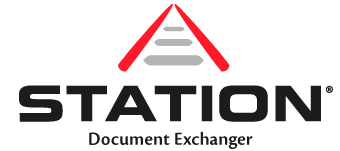Numerous PDF documents pass through each company every day, whether they are scans of paper documents or natively digital documents.
Very often the need arises to insert the data contained in these documents into the company information system (eg in the ERP or in any other software), a manual operation which, besides being extremely time-consuming, also involves a high risk of making mistakes.
With the Station software it is possible to automatically acquire the information contained in PDF documents and replace the manual input of the user with automated processes.
Data extraction from native / vector PDFs
As for the extraction of information, the simplest type of PDF to manage is the vectorial one, which contains selectable and searchable text: from these natively digital documents it will be possible to obtain the text directly and without difficulty, with the guarantee of the certainty of data.
But how does Station extract information from the native PDF? This Robotic Process Automation (RPA) software is equipped with what is called a "mapping engine" that allows you to define rules (static or dynamic) for searching and extracting data from documents.
Data extraction from scanned PDFs
Not always the documents that transit in the company are already in digital format: in the case of paper documents, there is the possibility of scanning and obtaining a PDF containing the image of the document.
Thanks to the OCR (Optical Character Recognition) feature, Station transforms the image of the document into a format in which the text becomes recognizable and usable by the software for data extraction.
Practical examples of data extraction from PDFs with Station
The Station software, after acquiring the data contained in the PDF document, can perform additional processing: for example the information can be automatically loaded into one of the business software (eg erp) or re-processed to create a document in a new format (eg creation of the XML file for electronic invoicing starting from the PDF invoice).
Conversion of invoices, from PDF to XML for electronic invoicing
The current Italian law on electronic invoicing requires that invoices are created in a specific XML format, and that the transmission takes place through the Exchange System.
Often, however, the ERPs are able to generate the invoice only in PDF format: Station extracts all the necessary data from the PDF invoice and recomposes them in an XML file, in compliance with the provisions of current legislation.
The generated XML can be automatically made available to the software used to send electronic invoices: Station is in fact able to interface with any ERP or DMS.
Station is also part of a complete suite of document solutions: it is natively integrated with the Globe document management software, which includes a module completely dedicated to the management of all phases of the electronic invoicing process, both for incoming and outgoing invoices.
Automatic order acquisition
Purchase orders are a typical example of PDF documents that, once received, require data to be uploaded to the company information system.
In fact, the "traditional" process of managing a customer order requires several steps and the manual entry in the company erp of the information contained in the document.
Station is capable of handling a customer order, for example arrived via e-mail, in total autonomy:
- Station monitors the mailbox and, if present, downloads the email, identifying the sender and therefore the type of order.
- Thanks to the mapping performed during configuration, Station recognizes and extracts the necessary data
- Station uploads data to the ERP, integrating without the need for user intervention.
Automatic acquisition of data from purchase invoices in PDF
Purchase invoices received in PDF format can also be processed effectively by the Station software.
A practical example is the case of Interfrigo Transport, a company specializing in fruit and vegetable transport: the company, in fact, exploits the potential offered by the application to automatically extract from the invoices (received from its customers and destined for end customers) all the information necessary to create customs bills and insert all the data automatically in the customs management system.
Learn more about the project invoices-customs bills

